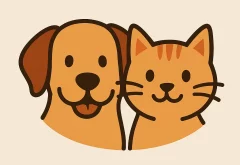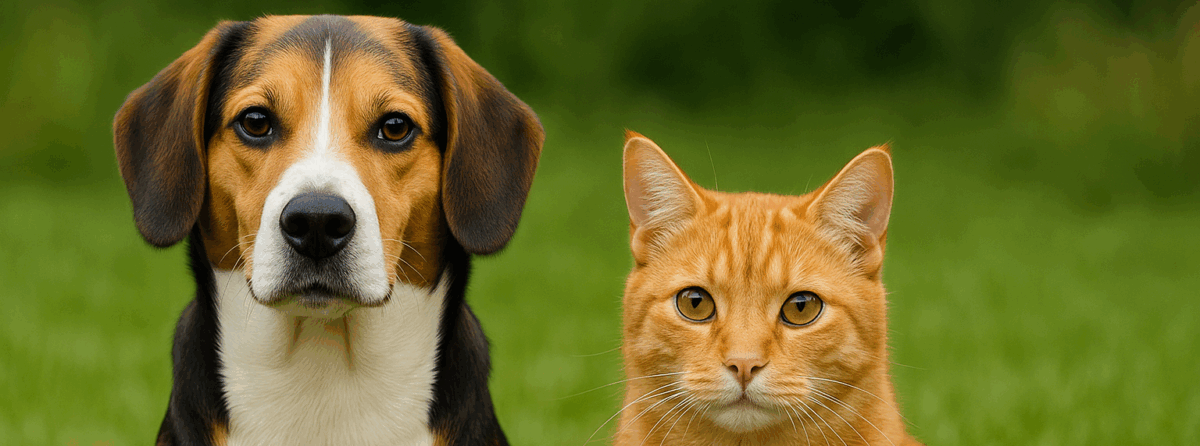Quick answer, then the story
Short answer: No, Maine Coons aren’t hypoallergenic (I go into all the gritty details about that myth in this deep-dive). They still make Fel d 1, the main cat allergy protein. But can some folks live with them anyway? Yep. I do. It took work, and some tears. But yes.
Let me explain.
My allergy deal (so you know where I’m coming from)
I’ve had mild cat allergies since I was a kid. Think itchy eyes, sneezy nose, little hives on my wrists if I rub my face after petting a cat. Not dramatic. Still annoying.
I’m the person who loves cats, then keeps tissues in every room. Cute, right?
Meet Moose, my Maine Coon
My Maine Coon’s name is Moose. He’s huge, fluffy, and weirdly polite. He chirps more than he meows. He also drools a little when he’s happy, which is adorable… until it hits my skin. If you’re curious what day-to-day life with a differently colored gentle giant looks like, check out this snapshot of life with a white Maine Coon.
First week with Moose, I thought, “Maybe Maine Coons are safer for allergies.” People say that online a lot. Big myth. By day three, I had puffy eyes after a couch cuddle. I’d scratched my cheek without washing my hands. Boom. Itch city.
So no, Maine Coons aren’t hypoallergenic. But here’s the twist: I react to Moose less than I did with my friend’s short-hair tabby. Why? My guess: grooming habits, bathing, and how I clean the house. Also, Moose doesn’t sleep on my pillow. That matters.
What actually triggers me
This part surprised me. It wasn’t just the fur.
- His saliva, especially after face rubs. If he licks my hand, I wash right away.
- Dusty litter. The dust carries allergens and makes me sneeze fast.
- Spring shedding. Big floofs everywhere. Like tiny tumbleweeds.
- Fabric traps (blankets, hoodies). They hold onto the protein.
By the way, the allergen is called Fel d 1. It’s in cat spit, skin, and glands. All cats make it. Long hair doesn’t make it vanish. If anything, long coats can hold more of it. If you want the hard science behind Fel d 1, here’s an easy-to-digest overview of the protein, plus a detailed clinical paper on how it becomes airborne and provokes allergic responses.
A few real moments that taught me stuff
- Couch Night Fail: We had a movie night. Moose curled under my chin. Sweet. I forgot to wash my hands. I rubbed my eye during the credits. Ten minutes later, I looked like I’d lost a small fight. Lesson learned: hand wash after cuddles.
- Bath Day Win: I gave him a bath with unscented pet shampoo. The next day felt so much easier. Less sneezing when he head-bumped my cheek. I don’t bathe him weekly—too much. But once a month helps.
- Litter Switch: I swapped to a low-dust, unscented clumping litter. Huge difference. Less nose tickle. I also use a covered bin and scoop daily. Not glamorous. Works.
- Spring Shed Season: In April, it looked like it snowed inside. I did quick brush sessions (five minutes) most days. Short bursts helped more than one long fight with the brush.
Gear and habits that actually helped
I’m not selling you anything. This is just what worked for me with Moose in a small city apartment.
- HEPA air purifiers (I use a Coway Mighty in the living room, a Levoit Core in the bedroom)
- A good vacuum with a HEPA bag (I love my Miele; it doesn’t puff dust back out)
- Weekly hot washes for bedding; pillow covers that zip
- A simple stainless steel comb and a soft slicker brush for that thick coat
- A damp microfiber cloth to wipe his coat on non-bath weeks (I sometimes swap in fragrance-free wipes—these are the only cat wipes my cats let me touch them with)
- Low-dust, unscented litter; I keep the box in a ventilated corner
- Hand washing after petting, no face rubs until I do it (I mess up sometimes)
- Moose sleeps outside my bedroom (I know, sad, but my eyes thank me)
If you need more structured advice, resources like PetCareServices.org break down grooming techniques and cleaning schedules that minimize allergens. Their deep-dive on the cat grooming tools that actually work helped me pick brushes that Moose tolerates.
I also take a daily allergy pill during peak shedding. Cetirizine works for me. If I’m bad, a simple saline nose rinse helps. Nothing fancy.
But wait—why do some people say they’re fine with Maine Coons?
I wondered that too. I’ve met two folks who swear Maine Coons don’t bother them. I’ve met another who breaks out in hives from them. Bodies are weird. Allergy levels can be different, cat by cat. Neutered males can sometimes shed fewer hormones that stir up trouble. Clean homes help. Good grooming helps. There isn’t one rule.
So yes, you might do okay. Or not. I know, that sounds like a cop-out. But it’s honest.
Trying before you commit (this saved my skin)
I did “test visits” before bringing Moose home. I spent two hours at the breeder’s house. I also visited a friend’s Maine Coon, Bear, for a weekend. I brought my own blanket and sat on it. I washed my hands a lot. After both visits, I had mild symptoms, but nothing scary. That told me I could handle it with a plan.
If you can, borrow time with a Maine Coon. Hang out for a couple hours in a home where the cat lives. Sit on the floor. Play with a feather wand. Then wait and see how your body reacts that night and the next morning.
Grooming routine that didn’t make Moose hate me
He’s huge, so wrestling him is a no. Short, calm sessions worked best.
- Brush 3 to 4 days a week, five minutes each time
- Wipe with a damp cloth on non-bath weeks
- Quick nail trims with treats
- Bath every 4 to 6 weeks, warm water, unscented shampoo, lots of praise
You know what? He now naps next to the brush drawer. I swear he knows.
Small myth check
- “Long hair cats don’t cause allergies.” Nope. The protein is on skin and in saliva, not just on hair.
- “Sphynx cats are safe.” Not really. They still make the protein. They just need wipes and baths more often.
- “Maine Coons are hypoallergenic.” No. They’re not. But you might do okay with the right setup.
One random note about online research: when I was browsing Reddit for grooming tips (r/mainecoons is great), Reddit’s suggestion feed threw all kinds of unrelated communities at me—including NSFW photo hubs. If curiosity ever takes you there, a concise round-up like Reddit nudes can save you from endlessly clicking through threads to find the most up-voted shots.
If those tangents spark an interest in real-world adult socializing rather than just virtual scrolling, you might appreciate this well-organized guide to the local swinging scene—Westfield swingers—which explains etiquette, upcoming events, and how newcomers can get comfortable without wading through sketchy forums.
Who should get a Maine Coon if they’re allergic?
If your reactions are mild to moderate, and you’re willing to clean, you’ve got a shot. If you have asthma that flares with cats, talk to your doctor first. Try time with a Maine Coon before you commit. Please don’t wing it.
If you do bring one home, build a little plan:
- Keep the bedroom a cat-free zone
- Run a HEPA purifier where the cat hangs out
- Tidy fabrics that trap fur (throws, curtains)
- Brush often, but gently
- Wash hands after petting
The bottom line from my couch (and my tissues)
Maine Coons are not hypoallergenic. I still react to Moose. But with air filters, grooming, and a bedroom rule, I live pretty comfy with him. I still get the odd itchy eye. I still find floofs everywhere. But he chirps when I cook eggs, and follows me like a dog, and honestly, he’s worth the extra laundry.
So if you’re asking, “Can I live with

